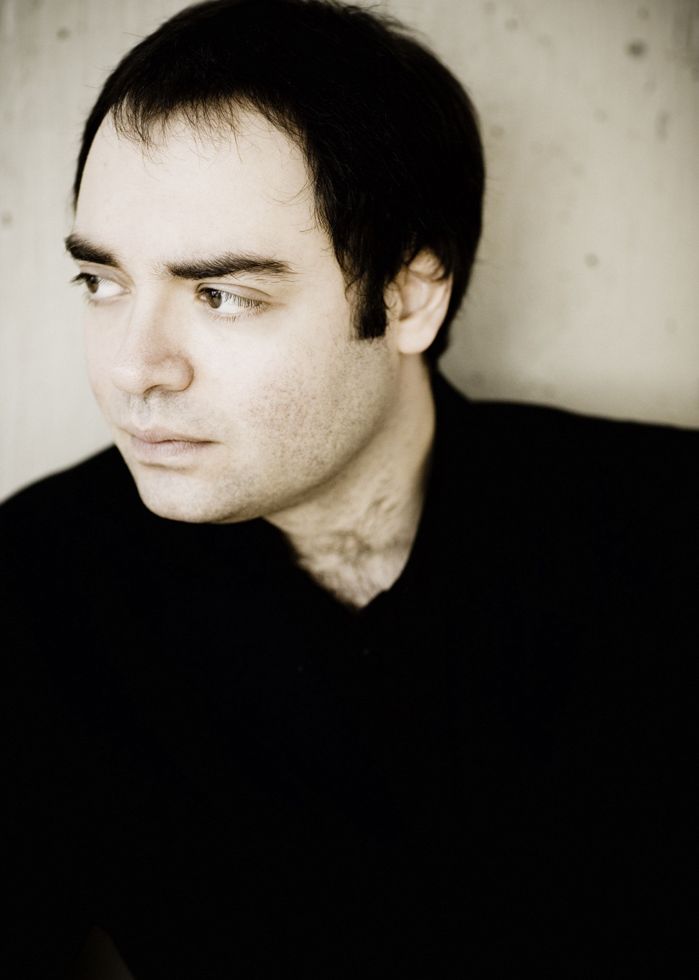Even the most reluctant of completists should find the prospect of the Beethoven works for cello and piano undaunting. In their totality, these pieces consist of just five sonatas and three sets of variations, which fit neatly on to just two CDs, or occupy two recital programmes. The works are also very important in the early development of the solo cello repertoire. Beethoven biographer Jan Swafford describes the “confident, ebullient, fresh and youthful” sonatas of Op 5 as a genre which the composer, at the time, had “virtually to himself".
French cellist Jean-Guihen Queyras and Russian-born pianist Alexander Melnikov (pictured below by Marco Borggreve) are performing these works over two nights, of which their Sunday Wigmore recital, played to a two-thirds-full house, was the first. It presented the first three sonatas and the last set of variations, with the last two sonatas and the first two sets of variations to follow on Monday.
Melnikov's judgements of how to create stillness and repose were completely persuasive
Queyras and Melnikov come from very different traditions indeed – one could easily imagine that Melnikov must have worked with Russian cellists with a massive concept of the tone of the instrument, whereas from his very first utterance in the F major Sonata from 1796, Queyras showed what an ethereal half-tone the instrument can produce. Despite their contrasting heritages, pianist and cellist have functioned as a regular duo for years, and form a partnership of equals. The detailed work that they have put into these Beethoven pieces was evident.
They were at their most eloquent in their judgment of pacing at the moments of near-stasis which precede the headlong launch into a rondo movement. These sections didn't feel calculated or forced, they simply felt right. Melnikov's judgements of how to create stillness and repose in the certain knowledge that the calm he is creating is about to be shattered were completely persuasive.
Those moments were very welcome in this programme, however, because the predominant mode of expression was very fast. There is no doubting both players' technical ability to dispatch these movements at speed, but the Op 5 sonatas are essentially made up of four quick movements at more or less the same tempo, in which a slightly lower gear would occasionally have been welcome. Or perhaps the overriding objective of presenting the complete works and the construction of a satisfyingly varied programme will always be at loggerheads with each other.
 Such quibbles were soon forgotten, because the most persuasive moments came in the second half. The first movement of the Third Sonata, Op 69, has exactly the same phrase ushering an almost infinite variety of different moods. Queyras's perfectly in-tune non-vibrato tone was particularly effective here. He is a classy player, who uses his wide tonal and expressive range to serve the music.
Such quibbles were soon forgotten, because the most persuasive moments came in the second half. The first movement of the Third Sonata, Op 69, has exactly the same phrase ushering an almost infinite variety of different moods. Queyras's perfectly in-tune non-vibrato tone was particularly effective here. He is a classy player, who uses his wide tonal and expressive range to serve the music.
And better still was the encore, the Largo of Chopin's Cello Sonata. It brought a reading that was exactly the dolce e cantabile prescribed, played by the cellist with clear understanding of and involvement in the harmonic progression. That was sheer delight.
- Second concert at the Wigmore Hall tonight
- Both concerts broadcast on BBC Radio 3 and available on the iPlayer for one month















Add comment